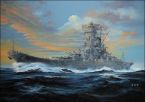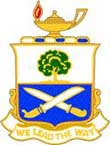herwin
Posts: 6059
Joined: 5/28/2004
From: Sunderland, UK
Status: offline

|
Let me provide the details of the attack:
I had 3 CVTFs and 2 SAGs on patrol south of Guadalcanal. They encountered a IJN sub and it ambushed the Enterprise, hitting her twice and slowing her to 18 knots. I removed her surface escorts and sent her to Noumea with four good DDs as ASW escort. I also deployed some ASW TFs to the area, one from Noumea and one using local assets.
The following two turns, successive attacks by RO boats stripped off two of the escorting DDs, and chopped up one of the ASW TFs. Finally, on the third turn, one got to the carrier, which had two DDs left, and hit her twice. During this period, I was frantically trying to reinforce the escort and get the ASW TFs into the area. The reinforcements ran into the meet bug, and the stronger of the ASW TFs stayed in Noumea, apparently planning to meet the CVTF there.
Lessons learned:
1. The meet bug has not been squashed.
2. Subs are too effective.
Japanese submarine torpedoes at that point in the war had a range of 7-9,000 meters at 30 knots. A TF making 16-18 knots was several times as fast as a submerged IJN submarine, so the sub could be treated as essentially stationary, functioning like a mine with an effective range of perhaps 3-4 nm. In game terms, each sub covered about 7 nm of a 46 nm hex, so the probability of engaging the major combatants in the TF was about 15% per sub in the hex--or 25% to include engaging the screen. (It was different if the TF were operating in the hex or were moving slow enough that the sub could approach it, but here we're considering a TF passing through the hex.) If the sub was close enough to engage, there was still the problem of getting a decent target solution. What I was seeing here reset my indicator lamps.
(For the Navy types here, I was a system engineer for the IBM BSY-2 proposal, doing the system modelling. I also did communications system modelling for the Centurion class and worked on OBU, ASWOC, and some other more obscure systems. It's not accidental my PhD was a sonar system model, investigating acoustically-guided target detection, tracking, classification, and engagement. A guy down one floor came up with the idea for the BQD-5G WAA.)
< Message edited by herwin -- 12/16/2009 4:33:53 PM >
_____________________________
Harry Erwin "For a number to make sense in the game, someone has to calibrate it and program code. There are too many significant numbers that behave non-linearly to expect that. It's just a game. Enjoy it." herwin@btinternet.com |
 Printable Version
Printable Version










 ) but they will still be far more potent than in WITP due to the new possibilities. And not you should be the one that is complaining but Miller, because you are the one who will get 200+ of the buggers to hunt his shipping.
) but they will still be far more potent than in WITP due to the new possibilities. And not you should be the one that is complaining but Miller, because you are the one who will get 200+ of the buggers to hunt his shipping.

 ) in the Patch then that's where we should focus, not on patrol zones or react range settings.
) in the Patch then that's where we should focus, not on patrol zones or react range settings.







 New Messages
New Messages No New Messages
No New Messages Hot Topic w/ New Messages
Hot Topic w/ New Messages Hot Topic w/o New Messages
Hot Topic w/o New Messages Locked w/ New Messages
Locked w/ New Messages Locked w/o New Messages
Locked w/o New Messages Post New Thread
Post New Thread